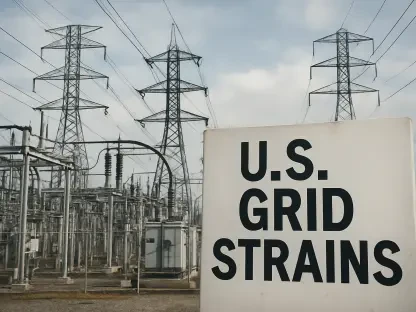The legal petition filed by the states of Texas and Utah, along with the advanced nuclear technology company Last Energy, against the Nuclear Regulatory Commission (NRC) has brought to light significant concerns regarding the current regulatory framework for nuclear reactor licensing. The lawsuit challenges the NRC’s 69-year-old rule, arguing that it exceeds the agency’s statutory authority and imposes unreasonable burdens on the development of microreactors.
Challenging Overburdensome Regulations
The Plaintiffs’ Argument
The plaintiffs argue that the existing NRC rule is excessively restrictive and hampers the progress of microreactor technologies. They claim that this rule is a significant barrier to new nuclear reactor construction in the U.S., making it nearly impossible to build any new commercial reactor. The plaintiffs believe that the stringent regulations are not proportionate to the risks posed by smaller, inherently safer reactor designs. They emphasize that the current regulations don’t appropriately factor in the advancements in technology and safety associated with microreactors, which could serve as a cleaner and more efficient energy source.
Additionally, the plaintiffs contend that the burdensome regulations present substantial financial and logistical challenges for companies. These challenges often result in protracted and costly licensing processes that discourage innovation and investment in the nuclear sector. This regulatory environment, they argue, creates a discrepancy between the potential benefits of microreactors and the feasibility of their deployment, stifling efforts to advance and integrate these technologies into the energy market.
Impact on Microreactor Development
The restrictive nature of the NRC’s rule has led to a stifling effect on innovation within the nuclear sector. Microreactor developers face significant hurdles in navigating the complex regulatory landscape, which delays the deployment of advanced nuclear technologies. This has resulted in a slow pace of development and a lack of new commercial reactors being built in the United States. The challenges associated with complying with these stringent regulations discourage innovation and limit the potential for cleaner and more efficient energy solutions provided by microreactors.
Moreover, the slow regulatory approval process contributes to lost opportunities in the global energy market, where demand for safer and more efficient power sources grows steadily. The inability to bring new technologies to market quickly puts the U.S. at a competitive disadvantage, as international players may capitalize on these opportunities more rapidly. The limited progress also means that the U.S. is missing out on the significant environmental and economic benefits that could come from the widespread adoption of microreactor technology.
Scope of NRC Authority
Misinterpretation of the Atomic Energy Act
The lawsuit highlights a specific misinterpretation by the NRC regarding its regulatory authority under the Atomic Energy Act of 1954. The plaintiffs argue that the NRC stretches its mandate beyond what was intended by applying stringent scrutiny to reactors that do not significantly threaten health, safety, or national security. This overreach, they contend, is unwarranted and detrimental to the advancement of microreactor technologies. By heavily regulating inherently safer microreactors, the NRC is perceived to be stifling innovation unnecessarily and hindering the development of new energy solutions.
The Atomic Energy Act was enacted with the primary intent of protecting public health and safety while facilitating the peaceful uses of atomic energy. However, the plaintiffs argue that the NRC’s current interpretation of its authority leads to excessive precautionary measures for microreactors, which have considerably lower risk profiles compared to traditional large-scale reactors. This, according to the plaintiffs, undermines the core objective of the Act: to promote progress in the field of atomic energy for the public good.
Call for Proportional Regulation
The plaintiffs suggest that a more flexible regulatory framework is necessary, one that considers the safety case proportional to the reactor’s hazards. They seek to exempt Last Energy’s 20-MW reactor design and certain research reactors from the overreaching NRC’s definition of nuclear utilization facilities. This approach would allow for a more balanced and reasonable regulatory environment that supports innovation while ensuring safety. By tailoring the regulatory requirements to the actual risk posed by the new reactor designs, the NRC can foster a more conducive environment for the growth of microreactor technology.
There is a call for the NRC to adopt a risk-informed regulatory approach, which involves a detailed risk assessment of each reactor type. This would ensure that regulations are stringent where necessary but more lenient where the risks are minimal. Such proportional regulation could significantly reduce the barriers to entering the nuclear market, thus incentivizing more companies to invest in and develop innovative nuclear technologies without compromising safety.
Global Perspective and Contrasts
Last Energy’s International Strategy
In response to the overburdened U.S. regulatory environment, Last Energy has shifted its focus to international markets. The company has made significant strides in Europe, with plans for numerous reactor facilities, including a major project in Wales expected to go online by 2027. This strategic move highlights the contrast between the regulatory environments in the U.S. and other countries, where more adaptive frameworks are in place. These international markets provide a more welcoming atmosphere for nuclear innovation, allowing companies to bypass the extensive and cumbersome regulations seen in the U.S.
European nations have shown a greater willingness to adopt advanced nuclear technologies, recognizing their potential to contribute to energy independence and environmental sustainability. This favorable regulatory environment enables companies like Last Energy to advance their projects more rapidly, ensuring they stay competitive in the growing global nuclear market. By capitalizing on these opportunities, Last Energy can demonstrate the viability and benefits of microreactor technologies, potentially influencing regulatory reforms in the U.S.
International Regulatory Comparisons
The article underscores the differences in regulatory approaches between the U.S. and other countries. While the U.S. regulatory framework is seen as overly stringent, other countries have adopted more flexible and accommodating regulations that facilitate the development and deployment of advanced nuclear technologies. This global perspective emphasizes the need for the U.S. to modernize its regulatory processes to remain competitive in the nuclear sector. Countries with more progressive regulatory approaches are demonstrating significant advancements in deploying microreactor technologies, which can serve as a model for U.S. regulatory reform.
For instance, Canada and the United Kingdom have implemented adaptive regulatory measures that support innovation while maintaining robust safety standards. These nations have recognized that a one-size-fits-all regulatory approach is not suitable for advanced nuclear technologies and have adjusted their frameworks to encourage development. By embracing a similar adaptive regulatory stance, the U.S. could spur domestic innovation and position itself as a leader in the nuclear energy sector.
Trends in Nuclear Innovation
Challenges in Building New Reactors
The difficulty in building new commercial reactors in the United States is evident, with only three reactors constructed in the past 28 years. This has led to significant interest in reforming NRC regulations to facilitate the development and deployment of advanced nuclear technologies. More than a dozen developers have engaged in pre-application activities with the NRC to standardize and expedite the application review process. The slow pace of new reactor construction reflects the broader challenges faced by the nuclear industry in navigating the complex and protracted regulatory environment.
These challenges are particularly pronounced for developers of microreactors, which, despite their potential benefits, are subjected to the same rigorous regulatory requirements as larger, more hazardous reactors. The result is a stagnation in innovation, with promising technologies delayed or abandoned due to the insurmountable regulatory obstacles. Addressing these issues is critical for the U.S. to revitalize its nuclear industry and fully leverage the capabilities of advanced reactor designs.
Efforts to Reform NRC Regulations
The article mentions ongoing efforts to reform NRC regulations to better support nuclear innovation. These efforts include the Part 53 rulemaking process aimed at introducing proportional, performance-based regulations suitable for advanced reactor technologies. The goal is to create a more favorable regulatory environment that balances safety and innovation, ensuring the reliable and efficient development of nuclear energy. By focusing on performance-based criteria, the NRC can offer more flexibility, allowing developers to meet safety standards in innovative and cost-effective ways.
In addition to the Part 53 rulemaking process, there are collaborative initiatives involving industry stakeholders and regulatory bodies to refine and streamline the regulatory framework. These initiatives seek to address specific pain points faced by developers and propose practical solutions to overcome them. By fostering open dialogue and cooperation, the NRC and the industry can work together to develop a regulatory environment that supports the growth and deployment of advanced nuclear technologies.
Ongoing Regulatory Reforms
Part 53 Rulemaking Process
The NRC is working on the Part 53 rulemaking process, which aims to introduce proportional, performance-based regulations suitable for advanced reactor technologies. This process is expected to be finalized by 2027 and addresses some of the plaintiffs’ concerns by creating a more flexible regulatory framework that supports innovation while ensuring safety. By focusing on performance outcomes rather than prescriptive measures, the Part 53 rulemaking process allows developers to leverage technological advancements and innovative design features to meet regulatory requirements.
The Part 53 rulemaking process represents a significant shift in regulatory philosophy, moving away from a strictly prescriptive approach to one that recognizes the diverse nature of advanced reactor technologies. By incorporating risk-informed and performance-based criteria, the NRC can ensure that regulatory oversight is commensurate with the actual risks posed by different reactor designs. This more nuanced approach is expected to facilitate the deployment of a wider range of nuclear technologies, ultimately contributing to a more sustainable and resilient energy future.
Streamlining Microreactor Licensing
In addition to the Part 53 rulemaking process, there are efforts to streamline the licensing of microreactors smaller than 20 MW. These efforts aim to reduce the regulatory burden on microreactor developers, making it easier to bring new technologies to market. By simplifying the licensing process, the NRC hopes to encourage the development and deployment of advanced nuclear technologies. The streamlined licensing process is designed to be more efficient and less costly, addressing one of the main barriers to innovation in the nuclear sector.
The NRC’s initiatives to streamline microreactor licensing include creating clear guidelines and timelines for the approval process, reducing the uncertainty and complexity that developers currently face. By providing a more predictable and transparent regulatory pathway, the NRC can help foster investor confidence and attract more resources to the development of microreactor technologies. This, in turn, can accelerate the pace of innovation and deployment, enabling the U.S. to harness the benefits of microreactors more effectively.
Role of Legislative Action
The ADVANCE Act
The ADVANCE Act is a legislative effort intended to modernize the regulatory framework for nuclear energy development in the United States. The Act focuses on streamlining the licensing process for advanced reactors, including microreactors, and removing barriers to innovation. By proposing revisions to outdated regulations, the ADVANCE Act aims to create a more supportive environment for the growth of the nuclear industry, ensuring that the U.S. remains competitive in the global energy market. This legislative action highlights the need for continued efforts to balance regulatory oversight with the promotion of technological advancement and energy security.









